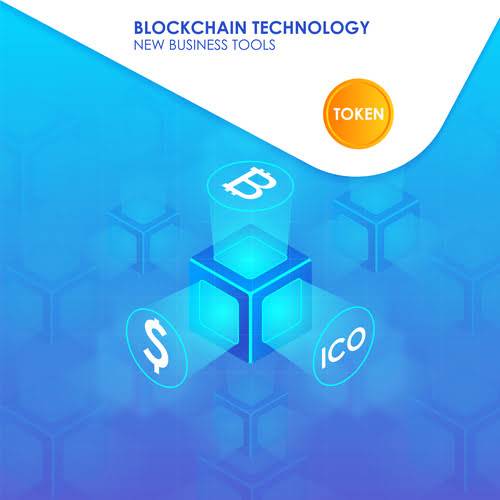Types of Enterprise Systems and Their Applications
By 1990, technology analysts had a name for this new category of business management software—enterprise resource planning. Enterprise software, or enterprise application software, is computer software used by organizations rather than individual users. Common types of enterprise software include contact centre software, business intelligence, enterprise communication, inventory management, marketing tools, online payments, and enterprise resource planning. Organizations use enterprise software to run, scale, and optimize their day-to-day operations and processes, as well as build their own unique applications. PMS is another kind of enterprise application software that can be helpful for any team and enterprise as a whole. Its purpose is to provide a convenient platform for effective project development through automation.
- With this choice, the overall cost can be lessened, error rate can be lessened, user satisfaction is increased and systems can be commissioned quickly.
- These programs automate operations in different types of organizations, governmental bodies, civil societies, and other groups.
- This type of enterprise business software is versatile and useful for any medium or big company.
- Some people tried the out-of-the-box solutions only to find they were not suitable for their business procedure.
- The maintenance action is triggered when the due date approaches and necessary work orders have been created.
- However, putting in the work to find the best accounting software for your unique situation is well worth the effort.
Although the term “financials” is often used when describing ERP software, financials and ERP are not the same thing. Maryia is an avid technology enthusiast who constantly follows the developments in the industry and enjoys shedding light on the hottest IT topics. She combines her own in-depth research with the direct input from seasoned engineers to create insightful and empowering content. This is the reason many ERP platforms start with a set of core modules, which allows for a highly flexible approach to suit unique business requirements. Helps in consolidating data from different departments, offering a unified, consistent view of business information. Allows you to identify and segment customers based on a myriad of attributes, preferences, behaviors, and buying patterns.
What is Enterprise Software & Why are There so Many Different Kinds?
There’s often an impulse to regard preventive maintenance and predictive maintenance as completely distinct entities. Unfortunately, this attempt to frame the relationship in simple terms of preventive maintenance vs predictive maintenance misses a key point. If we were practicing preventive maintenance on that equipment, we might use general information about that make and model of machine to formulate rough time estimates about when regular maintenance should be carried out on it.

CRM and SCM systems can exist separately, out of the ERP and comprise various modules, each addressing a specific business requirement. As you probably already know, generative AI is a type of artificial intelligence that uses machine learning models to generate new content based on existing data, such as text and images. With this centralized platform, employees can create new designs or sketches, and post them for team members to review and annotate. With EAM software, you can stay up-to-date on scheduled maintenance activities, meet compliance requirements and more. Not only does this improve visibility and transparency, but it enables more effective teamwork and collaboration. Alice, believing this public key to be Bob’s, encrypts her message with Mallory’s key and sends the enciphered message back to Bob.
How Generative AI is a Game Changer for Cloud Security
More specifically, it’s meant to help you cultivate and nurture leads, and then transform those leads into clients and long-term accounts. Long heralded as an ideal solution for large businesses, the ERP realm has recently expanded to support small-to-midsized (SMB) businesses, as well. This example[15] shows the need for Alice and Bob to have some way to ensure that they are truly each using each other’s public keys, rather than the public key of an attacker.

This is optimizing payment processing and making it easier for a range of businesses to get paid in more convenient ways. Such systems allow enterprises to control and maintain stocked products, whether they are raw materials or finished goods ready for shipment. These modules also assist in production planning and in carrying out materials sufficiency assessments. Enterprise applications are mainly designed and developed by an IT development team within the organization.
Enterprise Application Development and Deployment
You cannot get desired results from a software company that has extra workload and has had a hard time in meeting the expectations. The testimonials of the firm are an essential checkpoint to know its potential and adequacy. The reputable and strong references of the firm are the most essential proof that the software is coming up to the commitments made by the company and that it satisfies its users. More evaluation and analysis made by large businesses while they choose their software shows that software has cleared all the tests successfully and comes up to its expectations. With a various number of industries, it is not easy to see two separate enterprises that are similar. By reducing the number of actions that are done manually, the solution has freed up the time of the editors to review more articles which helps in increasing the revenue.

Enterprise resource planning, Customer relationship management systems, and supply chain management are all examples of enterprise systems. One of the first computers used for such information processing was the UNIVAC I, installed at the U.S. Bureau of the Census in 1951 for administrative use and at General Electric in 1954 for commercial use.
Financial reporting
Enterprise resource planning (ERP) manages and integrates business processes through a single system. Without ERP, companies tend to operate in silos, with each department using its own disconnected system. Which ones are the main applications depends on the business and the industry types of enterprise systems it operates in. Most companies can benefit from supply chain management, logistics, and financial applications to help them streamline their operations and expenses. Generally there are three deployment options for ERP systems; Cloud-based, on-premise, and a hybrid of the two.

Using cloud applications from your legacy ERP vendor often produces the same or better intelligence without needing an additional vendor relationship. With a secure and centralized data repository, everyone in the organization can be confident that data is correct, up-to-date, and complete. Data integrity is assured for every task performed throughout the organization, from a quarterly financial statement to a single outstanding receivables report, without relying on error-prone spreadsheets. ERP Systems and software support multiple functions across the enterprise, mid-sized, or small businesses, including customizations for your industry. SaM Solutions provide effective automation and seamless security for your enterprise software.
Project Life Cycle in Project Management: 5-Step Process
There are a lot of everyday tasks that can be automated with this software such as hiring, management of payroll, planning of workforce, management of performance, reporting, training of employees and engagement. Cloud-based accounting software facilitates easy, secure data sharing between your business’s financial stakeholders. Most accounting software includes free access for your accountant and allows for multiple users with customizable permissions, which means departments can get on the same financial page with relative ease. Accounting software should automate redundant data entry by syncing with your bank accounts and tracking expenses in real time.
These applications allow users to interact within a single interface, share information, and enable cross-functional collaboration. A typical enterprise information system would be housed in one or more data centers, would run enterprise software, and could include applications that typically cross organizational borders such as content management systems. This module keeps track of the organization’s finances and helps automate tasks related to billing tasks, account reconciliation, vendor payments, and others. Its key features include tracking accounts payable (AP) and accounts receivable (AR) and managing the general ledger. Financial planning and analysis data help prepare key reports such as Profit and Loss (P&L) statements. Enterprise software, also known as enterprise application software (EAS), is computer software used to satisfy the needs of an organization rather than individual users.
Get started with Oracle ERP
CRM is mainly focused on data processing, interaction with buyers, improvement of marketers’ job. Also, menial and manual tasks are eliminated, allowing employees to allocate their time to more meaningful work. ERP software also provides total visibility, allowing management to access real-time data for decision-making. Building an ERP from scratch can give you a competitive advantage over organizations that use standard ERP functionality. Such software can be flexibly customized and changed over time to reflect the growing needs of the business. You can add unique features, edit or remove the existing ones to suit the evolution of the company.
